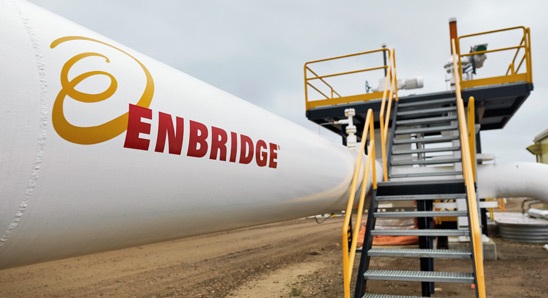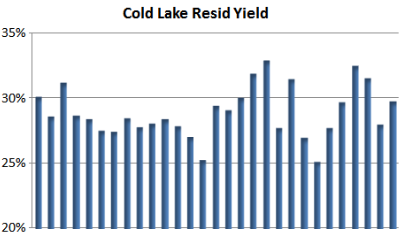RL Blogs

By Ralph Laurel
Apr 07, 2014Canadian qualities differ drastically from what refiners assume. Does your refinery have an adequate assay tracking program to manage these changes? |
||
| We all know that crude grade qualities change over time. Whether a conventional crude changes slowly over the years with field aging, or a synthetic crude changes more rapidly with operational changes, variant crude quality is a given in the refinery world.
What many refiners do not fully appreciate; however, is that the method of transportation has a great influencing factor on a refinery’s delivered crude quality. This is true whether waterborne crude is transferred from the USGC to Midcontinent through Capline, or landlocked crude is shipped from Canada to the U.S. through Enbridge.
Pipelines do not maintain neat segregations of material, so mixing occurs while in transit. Additional mixing also occurs in break-out tanks at crude terminals. Unlike shipping refined products, terminals do not maintain neat crude grade segregations since crude oils do not have many specifications.
While inter-transit pipe and terminal tank mixing can have considerable impacts, the largest swings in delivered crude qualities come from required diluent blending. Canadian crude shippers need to meet pipeline viscosity and density spec requirements, so diluents ranging from condensates to naphtha are traditionally used.
“largest swings in delivered crude qualities come from pipeline viscosity spec requirements”
Although these requirements are widely understood by Canadian crude shippers, many refiners who receive Canadian pipeline crude have limited understanding, particularly those in the U.S. Gulf Coast. To clarify, the crudes affected by diluent blending are primarily heavy crudes (i.e. conventional & dilbits). These quality variances for any single grade can be significant, up to several $/bbl.
Let’s take a look at Cold Lake crude for example. As Canadian pipeline viscosity specs become more stringent during winter months, higher diluent blending is required. In turn, the diluted bitumen crude quality lightens during the winter months, and heavies up during
The data in the graph represents multiple years of monthly Cold Lake crude samples, so notice how the yield pattern also changes from year to year. As producers have varying diluent blending economics, they are constantly optimizing the type of diluent used to satisfy pipeline shipping specs.
Since oil producers and shippers do not have many contractual obligations to deliver crude quality to end customers beyond normal API and sulfur ranges, this places refiners in a vulnerable position to widely varying pipeline delivered crude qualities.
So ask yourself the obvious question – how often does your refinery analyze the assay quality of heavy Canadian crudes? How of often are the assays in your refinery LP being updated to reflect the known seasonal changes in yield quality? I bet you that the answer is “not enough”. This level of sophistication isn’t well understood by many, and you are likely one of them.
With all of the volatility in crude pricing and economics, one cannot afford to have wildly inaccurate crude assay assumptions. Between changes in the light-heavy crude differential, to North America crude disconnects to world benchmarks, there’s enough market mayhem to worry about without having to even factor in 5% fluctuations in crude resid yield. That can easily throw off anticipated crude refined values by $2/bbl!
Majority of refiners around the world have a set expectation for crude quality consistency. It’s fair to say that many refiners do not even have robust assay monitoring programs on crudes routinely delivered. While this may not have had a significant impact on historic crude optimization efforts, those refineries venturing into new Canadian crude markets better think harder about crude quality monitoring. | ||
|
|










